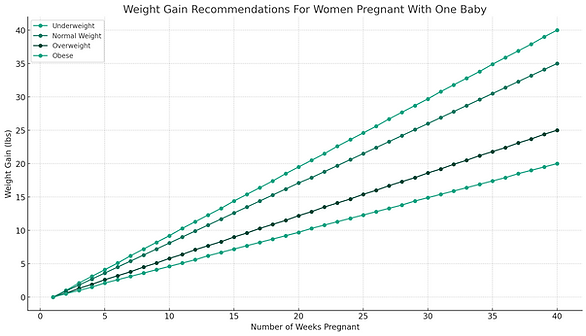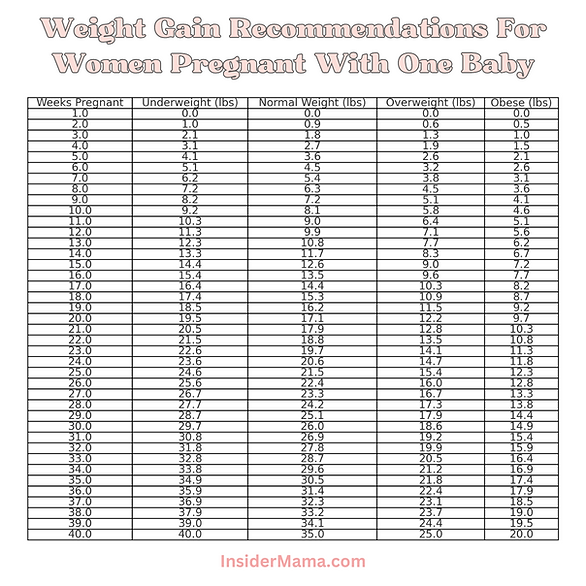
Mama-to-be, welcome to your personal guide for each week of pregnancy. This is a rollercoaster ride of growth, change, and all the little wonders in between. From the tiny beginnings to the big arrival, we’ll cover what’s happening to you and your little one, offering a peek into the baby’s development and the shifts in your body. I’m a mom just like you, and guess what? I’ve been through pregnancy five times, each one bringing a healthy, wonderful baby into this world. No medical jargon, just mom-to-mom chat to keep you informed and ready for what’s next.
Week 1 & 2: Preparing for Pregnancy
- Menstrual Period: These weeks are counted in your pregnancy, starting from the first day of your last period.
- Follicular Phase: Your body is preparing to release an egg.
- Health Focus: It’s a good time to start taking prenatal vitamins, especially folic acid.
- Lifestyle Check: Consider reducing caffeine and alcohol, and quitting smoking if applicable.
- Nutrition Tips: Focus on a balanced diet rich in fruits, vegetables, whole grains, and lean proteins.
- Ovulation Awareness: Track your cycle to predict ovulation, which is key for conception.
Week 3: Fertilization
- Conception: If sperm meets egg, fertilization occurs.
- Implantation Preparation: The fertilized egg travels towards the uterus.
- Early Signs: Some women feel slight cramping or spotting, known as implantation bleeding.
- Hormonal Changes: Your body begins producing pregnancy hormones like hCG.
- Nutritional Needs: Continue with prenatal vitamins and a nutrient-rich diet.
- Physical Activity: Gentle exercise like walking or yoga can be beneficial.
Week 4: Early Pregnancy
- Positive Test: Home pregnancy tests are now reliable.
- Embryo Development: The embryo is microscopic but growing.
- Symptom Watch: Some women start to feel mild symptoms like fatigue or breast tenderness.
- Doctor’s Appointment: Schedule your first prenatal visit.
- Hydration is Key: Increase your water intake.
- Emotional Support: It’s normal to have mixed emotions; reach out for support if needed.
Week 5: Development Begins
- Embryonic Changes: The embryo starts forming major organs.
- Heartbeat: The baby’s heart begins to beat.
- Symptom Intensity: Nausea or morning sickness may start.
- Nutrition Focus: Eat small, frequent meals to manage nausea.
- Pregnancy Announcement: Consider when and how you might want to share your news.
- Rest Up: Make sure you’re getting enough sleep.
Week 6: Rapid Growth
- Size and Shape: The baby is about the size of a sweet pea.
- Facial Features: Facial features like eyes and nostrils start to form.
- Heartbeat on Ultrasound: Possible to detect the heartbeat via ultrasound.
- Increased Symptoms: Morning sickness and fatigue often ramp up.
- Mental Health: Pay attention to your mental health, as hormonal changes can affect your mood.
- Prenatal Appointment: It might be time for your first prenatal checkup.
Week 7: More Developments
- Baby’s Brain: Brain development is rapid.
- Body Changes: The baby develops arms and legs buds.
- Symptoms: Hormone levels rise, potentially increasing nausea and fatigue.
- Hydration: Continue drinking plenty of fluids.
- Prenatal Vitamins: Ensure your vitamins have enough iron and calcium.
- Exercise: Continue with low-impact exercise.
Week 8: Forming Features
- Facial Features: Fingers, toes, and ears become more distinct.
- Physical Growth: The baby is now kidney bean-sized.
- Heart Development: The heart is becoming more complex.
- Dietary Adjustments: Adjust your diet to manage constipation.
- Prenatal Bonding: Some parents start talking or singing to the baby.
- Relaxation Techniques: Practice relaxation techniques to manage stress.
Week 9: Ongoing Growth
- Physical Changes: The baby’s tail starts to disappear.
- Organ Development: Vital organs like kidneys and liver start functioning.
- Symptom Fluctuation: Nausea might peak around this time.
- Pregnancy Brain: You might experience forgetfulness or lack of focus.
- Skin Care: Your skin may change; moisturizing can help.
- Hydration and Diet: Keep up with healthy eating and hydration.
Week 10: Fetal Development
- Size Update: The baby is now the size of a strawberry.
- Bone Development: Bones begin to harden.
- Facial Features: The baby’s face continues to take shape.
- Belly Changes: You may start to show a little.
- Dental Health: Keep up with oral hygiene; pregnancy can affect your gums.
- Stress Management: Find ways to relax, like prenatal yoga or reading.
Week 11: Nearly the End of the First Trimester
- Rapid Growth: The baby is now about 2 inches long.
- Physical Activity: The baby is moving, though you can’t feel it yet.
- Hair and Nails: The baby begins developing hair and fingernails.
- Increased Energy: Many women start to feel more energetic.
- Health Check: Discuss any concerns at your prenatal visits.
- Maternity Clothes: Start looking for comfortable maternity wear.
Week 12: First Trimester Ends
- Milestone: The risk of miscarriage drops significantly.
- Baby’s Reflexes: The baby can now open and close fingers.
- Vocal Cords: The baby’s vocal cords are forming.
- Nutrition: Focus on iron-rich foods to boost energy.
- Ultrasound: You might have an ultrasound to check baby’s growth.
- Sharing the News: Many choose to announce their pregnancy now.
Week 13: Second Trimester Begins
- Size Check: The baby is now the size of a lemon.
- Organ Maturation: The baby’s organs continue to develop.
- Decreased Symptoms: You might notice a decrease in nausea.
- Skin Changes: You might notice changes in your skin pigmentation.
- Exercise: A good time to engage in more consistent exercise.
- Dental Check-Up: Consider a dental check-up as pregnancy can affect dental health.
Week 14: Growing and Developing
- Fetal Size: The baby is about 3.5 inches long.
- Lanugo Growth: The baby grows fine hair called lanugo.
- Energy Levels: Your energy levels may continue to rise.
- Appetite Increase: You might notice an increase in appetite.
- Body Changes: Your uterus is growing and may start to push your abdomen out.
- Skin Care: Moisturize to help with skin stretching.
Week 15: Baby’s Movement
- Fetal Size: The baby is about 4 inches long.
- First Movements: You might start to feel the baby’s first movements.
- Hearing Development: The baby’s hearing is developing.
- Varicose Veins: Be aware of the potential for varicose veins.
- Nutrition: Focus on calcium-rich foods for bone development.
- Emotional Well-being: Pay attention to your emotional health and seek support if needed.
Week 16: More Noticeable Changes
- Baby’s Size: The baby is about the size of an avocado.
- Facial Expressions: The baby can make facial expressions.
- Body Adjustments: Your body continues to adjust to pregnancy.
- Breast Changes: Your breasts might start to produce colostrum.
- Regular Movement: Start noting patterns of the baby’s movements.
- Prenatal Classes: Consider starting prenatal classes.
Week 17: Rapid Growth
- Baby’s Size: The baby is about 5 inches long.
- Fat Layer: The baby begins to develop a layer of fat.
- Stretch Marks: You might start to see stretch marks.
- Blood Volume Increase: Your blood volume continues to increase.
- Healthy Snacking: Focus on healthy snacks to manage hunger pangs.
- Birth Plan: Start thinking about your birth plan preferences.
Week 18: Sensory Development
- Baby’s Movements: You’ll likely feel the baby move more.
- Ear Development: The baby’s ears are in position and hearing is developing.
- Backaches: Be aware of potential backaches as your belly grows.
- Hydration: Keep up with hydration to help with swelling.
- Pelvic Floor Exercises: Start or continue pelvic floor exercises.
- Mid-Pregnancy Ultrasound: You might have an ultrasound to check on the baby’s anatomy.
Week 19: Fetal Growth
- Fetal Size: The baby is about 6 inches long.
- Protective Coating: Vernix caseosa, a protective coating, forms on the baby.
- Round Ligament Pain: Be aware of potential round ligament pain.
- Glucose Screening Prep: Prepare for upcoming glucose screening tests.
- Nutrition: Ensure you’re getting enough Omega-3 fatty acids.
- Baby’s Sleep Patterns: The baby begins to develop sleep patterns.
Week 20: Halfway Point
- Baby’s Size: The baby is about the length of a banana.
- Ultrasound: This is when many have their mid-pregnancy ultrasound.
- Baby’s Movements: Baby’s movements become more noticeable.
- Body Changes: Your belly button may start to protrude.
- Anatomy Scan: A detailed scan can reveal the baby’s sex if you choose to know.
- Baby Registry: A good time to start thinking about your baby registry.
Week 21: Physical Changes
- Baby’s Size: The baby is about 10.5 inches long.
- Kick Counts: Start monitoring the baby’s kicks and movements.
- Skin Changes: You might notice skin changes, including stretch marks.
- Leg Cramps: Be aware of potential leg cramps.
- Nutrition: Focus on foods high in vitamin D and calcium.
- Birth Plan: Discuss your birth plan with your healthcare provider.
Week 22: Rapid Development
- Baby’s Size: The baby is about the size of a spaghetti squash.
- Hair Growth: The baby’s hair is growing, including eyebrows and lashes.
- Sleeping Position: Focus on sleeping on your side, ideally your left.
- Foot Changes: Your feet might start to swell; consider comfortable footwear.
- Hydration: Continue prioritizing hydration.
- Pregnancy Journal: Consider keeping a pregnancy journal.
Week 23: Sensory Development
- Baby’s Size: The baby is over 11 inches long.
- Sense Development: The baby’s senses are developing.
- Braxton Hicks Contractions: You might start to experience Braxton Hicks contractions.
- Gestational Diabetes Test: Prepare for or take your gestational diabetes test.
- Stretch Mark Care: Moisturize to help with itchy skin and stretch marks.
- Rest and Relaxation: Prioritize rest as your body continues to grow.
Week 24: Viability Milestone
- Baby’s Size: The baby is about a foot long.
- Lung Development: The baby’s lungs are developing.
- Viability: The baby is approaching the stage of viability outside the womb.
- Iron Intake: Ensure you’re getting enough iron to prevent anemia.
- Glucose Screening Results: Review your glucose screening results with your healthcare provider.
- Pelvic Floor Exercise: Continue or start pelvic floor exercises.
Week 25: Rapid Growth
- Baby’s Size: The baby is about 13.5 inches long.
- Spine Development: The baby’s spine is becoming more developed.
- Glucose Tolerance Test: You may have a glucose tolerance test.
- Heartburn Management: Adjust your diet to manage heartburn.
- Hospital Tour: Consider taking a tour of the hospital or birthing center.
- Nesting Instinct: You might start to feel the nesting instinct kick in.
Week 26: Brain Development
- Baby’s Size: The baby is about 14 inches long.
- Brain Waves: The baby’s brain is developing rapidly.
- Swelling: Be aware of swelling in your hands and feet.
- Childbirth Classes: Consider enrolling in childbirth classes.
- Healthy Fats: Incorporate healthy fats into your diet for baby’s brain development.
- Relaxation Techniques: Practice relaxation techniques for labor.
Week 27: End of Second Trimester
- Baby’s Size: The baby is about 14.5 inches long.
- Hiccups: You might feel the baby hiccupping.
- Breath Shortness: You may experience shortness of breath as the baby grows.
- Dietary Fiber: Increase dietary fiber to combat constipation.
- Birth Plan Review: Review and update your birth plan if necessary.
- Baby Movements: Keep tracking baby’s movements.
Week 28: Third Trimester Begins
- Baby’s Size: The baby is about 15 inches long.
- Eye Development: The baby can blink and the eyes can produce tears.
- Rh Factor: If you’re Rh-negative, you might receive an Rh immunoglobulin shot.
- Sleep Challenges: Adjust your sleeping positions for comfort.
- Prenatal Visits: Your prenatal visits may become more frequent.
- Kick Counts: Regularly do kick counts to monitor the baby’s activity.
Week 29: Continued Growth
- Baby’s Size: The baby is about 15.5 inches long.
- Muscle Development: The baby is building muscle and continuing to grow.
- Back Pain: Be aware of increasing back pain and practice good posture.
- Nursery Prep: Finalize preparations for the baby’s nursery.
- Maternity Leave: Start planning your maternity leave.
- Prenatal Yoga: Prenatal yoga can help with relaxation and physical comfort.

Week 30: More Development
- Baby’s Size: The baby is about 16 inches long.
- Skin Pigmentation: The baby’s skin is developing more pigmentation.
- Braxton Hicks: Braxton Hicks contractions may become more frequent.
- Breast Preparation: Consider preparing your breasts for breastfeeding.
- Hospital Bag: Start packing your hospital bag.
- Breathlessness: Manage breathlessness with good posture and relaxation techniques.
Week 31: Rapid Maturation
- Baby’s Size: The baby is about 16.5 inches long.
- Sleep Patterns: The baby’s sleep patterns are becoming more consistent.
- Nesting: The nesting instinct may become stronger.
- Mood Swings: Be aware of mood swings and seek support if needed.
- Lactation Consultation: Consider a lactation consultation for breastfeeding preparation.
- Comfortable Clothing: Ensure you have comfortable clothing for the final weeks.
Week 32: Preparation for Birth
- Baby’s Size: The baby is about 17 inches long.
- Lung Maturation: The baby’s lungs are continuing to mature.
- Head Position: The baby may start to move into the head-down position for birth.
- Birth Plan Discussions: Discuss your birth plan in detail with your healthcare provider.
- Pelvic Comfort: Use pillows for pelvic and back comfort.
- Hydration: Stay well-hydrated to help with Braxton Hicks contractions.
Week 33: Final Growth Phase
- Baby’s Size: The baby is about 17.5 inches long.
- Immune System: The baby’s immune system is developing through antibody transfer.
- Sleep Difficulties: Use pillows to support your belly and back for better sleep.
- Baby Movements: Pay attention to the baby’s movements and patterns.
- Preparation for Labor: Refresh your knowledge of labor signs.
- Maternity Leave Plans: Finalize your maternity leave plans.
Week 34: Nearing the End
- Baby’s Size: The baby is about 18 inches long.
- Fat Accumulation: The baby is accumulating fat for life outside the womb.
- Pelvic Pressure: You may feel increased pelvic pressure.
- Prenatal Appointments: Continue with regular prenatal appointments.
- Breastfeeding Prep: Gather breastfeeding supplies like nursing bras and pads.
- Birth Plan Revisions: Review and adjust your birth plan as needed.
Week 35: Almost There
- Baby’s Size: The baby is about 18.5 inches long.
- Kidney Development: The baby’s kidneys are fully developed.
- Amniotic Fluid: The level of amniotic fluid begins to decrease.
- Birth Classes: Review techniques from your birth classes.
- Rest: Prioritize rest as much as possible.
- Baby Position: Check the baby’s position with your healthcare provider.
Week 36: Late Pregnancy
- Baby’s Size: The baby is about 19 inches long.
- Lanugo Shedding: The baby sheds most of the lanugo.
- Packing for Hospital: Double-check your hospital bag.
- Birth Signs: Learn about the signs of labor.
- Rest and Relaxation: Focus on resting and relaxing as much as possible.
- Nursery Final Touches: Put the final touches on the nursery.
Week 37: Early Term
- Baby’s Size: The baby is about 19.5 inches long.
- Full-Term Development: The baby is considered early term and is preparing for birth.
- Nesting Instinct: The nesting instinct may be at its peak.
- Relaxation Techniques: Practice relaxation techniques for labor.
- Birth Plan Confirmation: Confirm your birth plan with your healthcare team.
- Baby Essentials: Ensure all baby essentials are ready at home.
Week 38: Full Term
- Baby’s Size: The baby is about 20 inches long.
- Organ Maturity: The baby’s organs are fully mature.
- Pelvic Discomfort: Increased pelvic discomfort is common.
- Signs of Labor: Watch for any signs of labor.
- Breathing Exercises: Practice breathing exercises for labor.
- Communication Plan: Set up a communication plan for when labor begins.
Week 39: Ready for Birth
- Baby’s Size: The baby is about 20.5 inches long.
- Cervical Changes: Your cervix may begin to dilate and efface.
- Rest: Get as much rest as you can.
- Birth Support: Confirm your birth support plan.
- Postpartum Prep: Prepare for postpartum needs like pads and comfortable clothing.
- Last-Minute Details: Take care of any last-minute details at home.
Week 40: Due Date
- Baby’s Size: The baby is about 21 inches long.
- Labor Watch: Be on high alert for any signs of labor.
- Comfort Measures: Use comfort measures like warm baths and massage.
- Patience: It’s common to go past your due date; try to stay patient.
- Regular Checkups: Continue with regular checkups with your healthcare provider.
- Emotional Support: Lean on your support system for emotional support.
Week 41 & Beyond: Post-Term
- Monitoring: Expect more monitoring for you and the baby.
- Induction Consideration: Discuss the possibility of labor induction with your healthcare provider.
- Physical Comfort: Focus on maintaining physical comfort.
- Mental Preparation: Mentally prepare for the possibility of induction or C-section.
- Stress Management: Manage stress through relaxation techniques.
- Support System: Stay in close contact with your support system.

I think one of the most dreaded parts of a prenatal exam is stepping on the scale. I went ahead and created this chart for you, so you can see the CDC recommended amount of weight gain per week. Hopefully this chart is a helpful tool for you, showing how much weight you might gain each week of your pregnancy. It’s really useful, especially since it considers whether moms were underweight, at a normal weight, overweight, or obese before getting pregnant. This chart is great for keeping track of weight gain from week one to week forty. It helps you make sure you’re on track for a healthy pregnancy, which is super important for both the baby and mom.


And there you have it your week-by-week pregnancy guide! We’ve walked through each week of pregnancy, sharing insights and tips to help you navigate this special time. While this guide offers a general overview, your body might throw you some curveballs or follow its own schedule, and that’s okay! Listen to it, rest when needed, and keep in touch with your healthcare provider. Soon enough, you’ll be at the finish line, ready to meet the newest love of your life.



